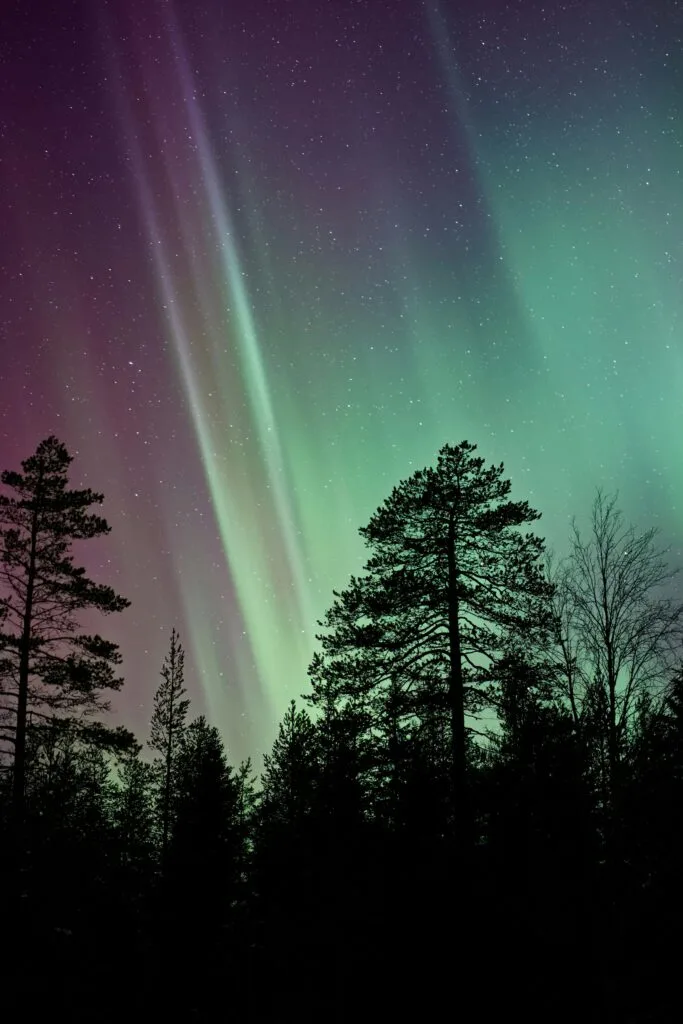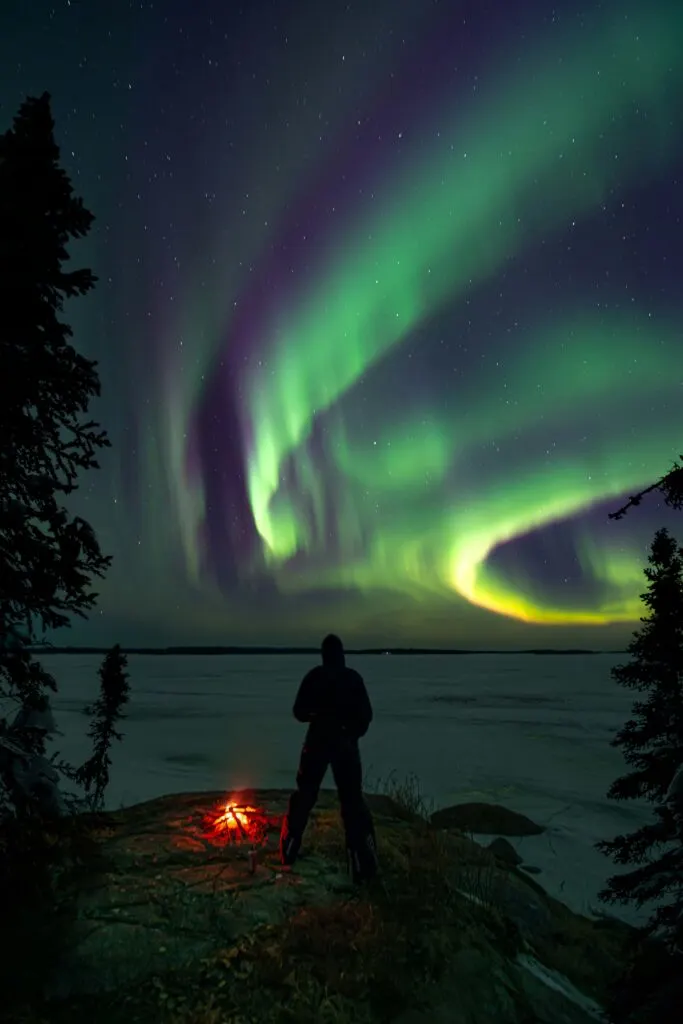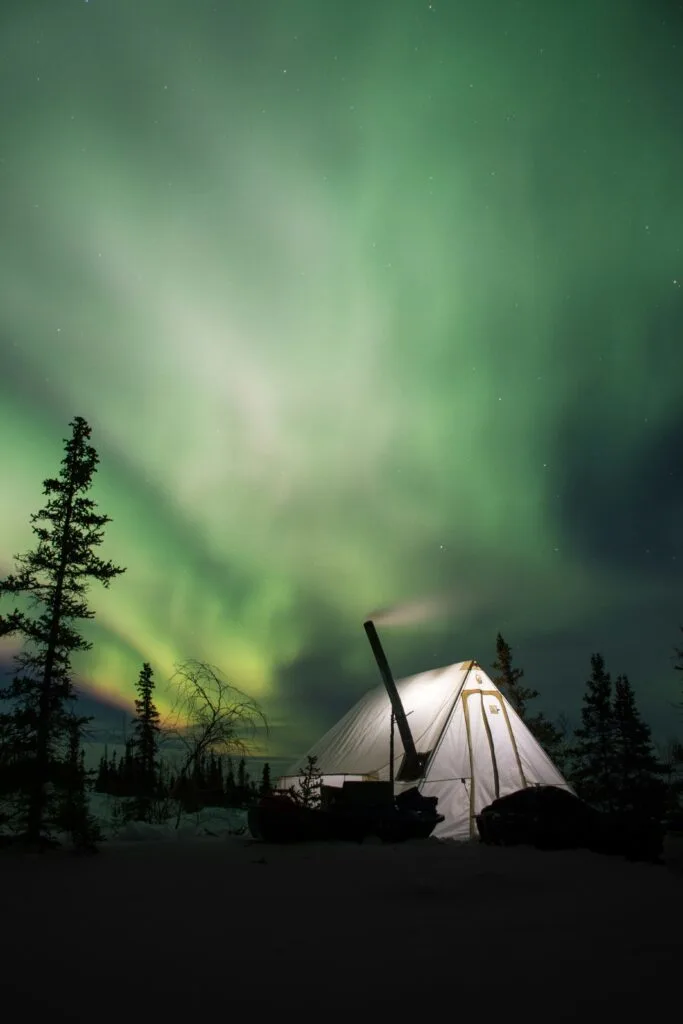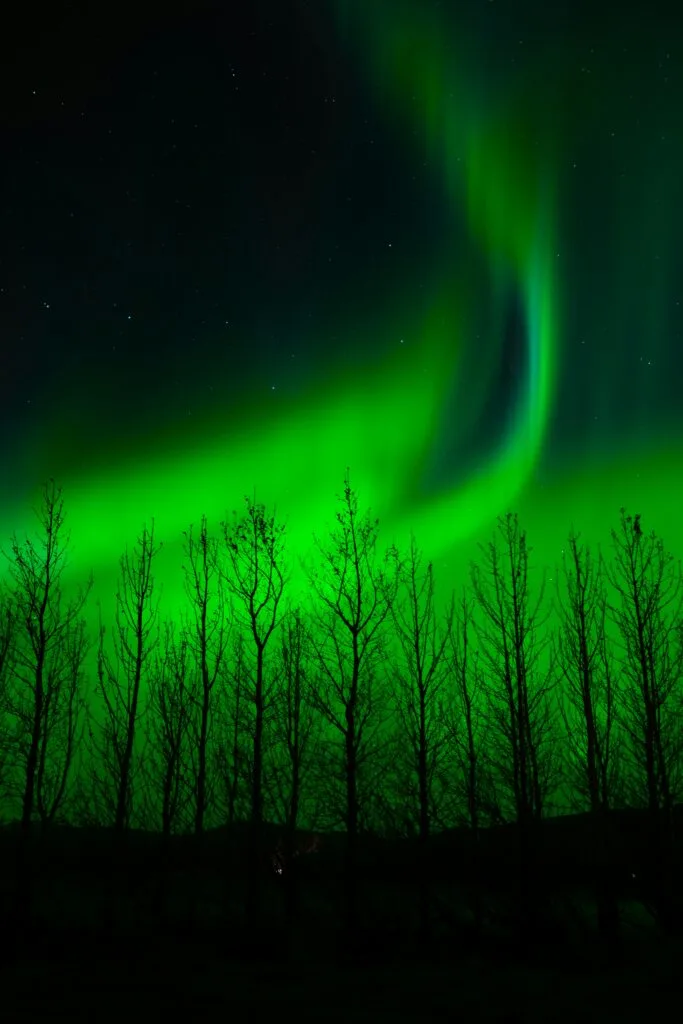Imagine looking up into the night sky and seeing vibrant waves of green and purple light dancing across the stars. This mesmerizing light show, known as the aurora borealis or the Northern Lights, is a spectacular natural phenomenon that typically graces the skies of high-latitude regions near the Arctic. However, residents and visitors in certain parts of California have recently been treated to this extraordinary display, a rarity for an area so far from the polar zones. Due to heightened solar activity and geomagnetic conditions, the Northern Lights California have made some stunning appearances in the Golden State.

If you're in California, the chance to witness the Northern Lights is an unexpected and thrilling opportunity. The state's varied geography, from its expansive deserts to its rugged coastlines, can provide a dramatic backdrop for the aurora's unpredictable appearances. Whether you're an avid stargazer or simply someone who appreciates the beauty of nature, this celestial spectacle offers a unique and unforgettable experience.
Seeing the Northern Lights California requires a bit of planning and a touch of luck, as solar conditions must align correctly for the aurora to be visible this far south. But when the conditions are right, and you find yourself under a clear, dark sky, you may just be able to catch a glimpse of one of the Earth's most awe-inspiring natural wonders without venturing into the frigid Arctic.
Northern Lights California: A Guide to Seeing the Aurora Borealis
The Phenomenon of Northern Lights
The Northern Lights, also known as Aurora Borealis, are a magical display you might be lucky enough to witness. This natural spectacle paints the sky with swirls of green, pink, and violet, all thanks to a scientific phenomenon known as a geomagnetic storm.
When charged particles from the sun collide with the Earth’s magnetic field, they create these beautiful lights. Different gases in the Earth's atmosphere produce different colors when they are energized. For example, oxygen is known to give off a greenish glow, which is the most common color associated with the aurora.
| Gas in the Atmosphere | Color of Aurora |
|---|---|
| Oxygen (up to 150 miles altitude) | Greenish-yellow |
| Oxygen (above 150 miles altitude) | Red |
| Nitrogen | Pink, violet, and occasionally blue |
While geomagnetic storms are more common at high latitudes near the poles, there have been instances where people in lower latitudes, such as California, have experienced this majestic phenomenon. Special conditions and a particularly strong storm may allow those as far south as California to see the Northern Lights.
Keep an eye on space weather forecasts, as they can predict when these conditions are likely to occur. If the forecast is promising, find a spot away from city lights, and with a clear view of the northern horizon, you just might catch a glimpse of the elusive Aurora Borealis.
Northern Lights California: California's Viewing Opportunities
If you're eager to witness the stunning display of the Northern Lights in California, you're in for a treat. Though this natural phenomenon is more common in higher latitudes, certain conditions have made it possible for you to catch a glimpse right here in the Golden State.
In Northern California, areas like Redding and Eureka offer darker skies away from the city lights, enhancing your chances to see the auroras. The Bay Area can be bright due to city lights, but during a strong geomagnetic storm, the lights may still be visible. Look for spots with minimal light pollution and a clear northern horizon.
The Sacramento Valley, while further south, might still provide a backdrop for the auroras on nights with strong solar activity. Here's a quick guide to increase your chances:
- Timing: Aim for hours between late evening and early morning when skies are darkest.
- Location: Seek high elevation points with unobstructed views towards the North.
- Weather: Clear, cloudless nights are ideal for aurora watching.
Tips for Best Viewing
- Monitor space weather forecasts on sites like the NOAA's Space Weather Prediction Center.
- Avoid full moon nights which can wash out the auroras.
- Bring a blanket and hot beverage—it can get chilly at night, even in California!

Science Behind the Aurora
When you look up at the dark sky and see the mesmerizing dance of the Northern Lights, you're witnessing a cosmic performance that begins with the sun. The sun emits a stream of charged particles known as the solar wind. This wind travels across space, carrying with it bits of the sun's atmosphere, which is a hot plasma.
As these charged particles approach Earth, they encounter the planet's protective magnetic field. The Earth's magnetic field extends far into space and is our first line of defense against the solar wind. When the charged particles from the sun interact with the edges of Earth's magnetic field, some are trapped and guided toward the poles.
At the poles, the magnetic field lines funnel these particles towards the upper atmosphere. Here, they collide with molecules of gas, such as oxygen and nitrogen. This collision imparts energy to the molecules, causing them to emit light—a process you may be more familiar with as glow-in-the-dark effects. Different gases release different colors of light; for example, oxygen can emit green or red light, while nitrogen often gives off blue or purple light.
The result of these spectacular collisions is the aurora—a brilliant display of light that can range from subtle glows to sweeping ribbons of color across the sky. The Northern Lights, or aurora borealis, are best viewed in high-latitude regions closer to Earth's magnetic poles.
Solar and Geomagnetic Activity
When you look up at the night sky and witness the Northern Lights in California, you're experiencing the beauty of solar and geomagnetic activity. These cosmic performances are the result of a complex interplay between the Sun and Earth's magnetic field.
Solar flares are powerful bursts of radiation from sunspots—cool, dark spots on the sun. These flares release energy equivalent to millions of 100-megaton hydrogen bombs exploding at the same time. When directed toward our planet, the energy and particles from a solar flare can travel through space and interact with the Earth's magnetic field, creating what we call a geomagnetic storm.
The Sun follows an 11-year cycle during which solar activity, such as solar flares and solar storms, waxes and wanes. This cycle influences the intensity and frequency of geomagnetic storms. During peak times in the solar cycle, geomagnetic activity on Earth can increase.
The Space Weather Prediction Center (SWPC) monitors this activity, providing alerts and forecasts to help prepare for space weather events. Geomagnetic storms can impact satellite operations, radio communications, and even power grids, but they also bring the stunning auroras further away from the poles.
Here's a quick break down:
- Solar Flare: A sudden eruption of electromagnetic radiation from the sun.
- Solar Storms: Disturbances in space weather associated with solar activity.
- Geomagnetic Storm: A temporary disturbance of the Earth's magnetosphere caused by solar wind shock wave and/or cloud of magnetic field.

Advisories and Forecasting
If you're hoping to catch the Northern Lights in California, staying updated with reliable advisories and forecasts is crucial. The National Oceanic and Atmospheric Administration (NOAA) offers a wealth of resources to help you plan your aurora-viewing adventures.
- For up-to-the-minute predictions on auroral activities, check out NOAA's Space Weather Prediction Center's Aurora Dashboard. The dashboard is experimental but provides a valuable prediction of the aurora's visibility for the current and following night.
- NOAA's 30 Minute Forecast can be especially helpful for short-term planning. This forecast is based on the OVATION model, allowing you to track both the location and intensity of the aurora. This model gives a forecast lead time, indicating the time it will take for the solar wind to travel from the L1 observation point to Earth.
- For a general understanding of when and where the aurora might be visible, the Aurora Viewline offers nightly predictions over North America. Keep an eye on the ‘viewline' for the southernmost points from which the aurora might be seen.
Remember, forecasting auroras involves considering solar activity, which is monitored by both NOAA and the National Weather Service. Visit reputable sources like Space.com for more insight into solar phenomena that may impact auroral displays.
Impact on Modern Technology
When the Northern Lights, or auroras, make their rare appearance in California, it isn't just a spectacle for your eyes. These natural light shows can actually have effects on the technology you rely on every day.
Power Grids: Your home's electricity is delivered through a vast network known as the power grid. During a strong geomagnetic storm, which is responsible for bringing the Northern Lights further south, this grid can experience voltage control problems. Such problems can potentially lead to power outages, so utility companies often have to be on high alert.
- Satellites: Those in orbit around Earth aren't immune to the effects of geomagnetic storms. Your GPS and satellite TV services could face disturbances. Additionally, satellites can sustain damage over time due to these storms, affecting their overall lifespan and reliability.
- Radio Communications: If you're a fan of ham radios or rely on high-frequency radio waves for communication, you may find disruptions more common during intense auroral events. This happens because the ionosphere, an atmospheric layer, undergoes disturbances due to solar particles colliding with Earth's magnetic field.
Photography and Observing Tips
When you're out chasing the Northern Lights in California, capturing that perfect picture or simply soaking in the view, there are a few tips that can help you make the most of the experience.
Camera Settings:
For stunning photographs, start with an aperture of f/2.8 or the widest your lens allows. Set your ISO between 3200-8000and shutter speed between 1-12 seconds, varying with the aurora's activity. More dynamic auroras call for quicker shutter speeds to avoid blurring. For a detailed guide, consider advice from Capture the Atlas.
Tripod Use:
Use a tripod to stabilize your shots during long exposure times. Even a slight movement can blur your photo.
White Balance:
Adjust the white balance according to the level of darkness and light pollution. Cooler settings around 3,500-3,900K can yield better results in some instances. Here is a guide from Shotkit for more information.
Social Media and Journalism:
If you're capturing the Northern Lights for social media or journalism purposes, authenticity is key. True color representation and minimal post-processing will resonate more with your audience.
To observe the Northern Lights:
- Find a location away from city lights to reduce light pollution, enhancing your view.
- Check aurora forecasts to time your outing.
- Allow your eyes to adjust to the dark for at least 20 minutes before observing.
- Share your experience on social media or with journalistic communities, but remember not to oversell; the natural phenomenon speaks for itself.
Friendly reminder: Patience is a virtue with auroras, so take your time and enjoy the process!

Best Times and Locations
When you're chasing the mystical Northern Lights in California, timing and location are everything. You'll want to mark your calendar for the height of the aurora borealis activity, typically escalated during events like severe geomagnetic storms. A G3 (strong) or even a rarer G4 (severe) geomagnetic storm significantly increases your chances of witnessing this celestial dance.
Best Times to Look Up:
- Equinoxes: Particularly around the March equinox, solar activity interacts with the Earth's atmosphere to enhance auroral displays.
- Winter Months: Longer, darker nights give you the best shot at catching the lights.
Prime Viewing Locations in California:
- North of Sacramento: Areas away from city lights with clear dark skies.
- High Altitude Spots: Mountains and clearings offer an unobstructed view of the night sky.
While California isn't traditionally known as a Northern Lights hotspot, during substantial geomagnetic storm events, states as far south as Alabama have caught glimpses of the aurora. So, it's worth keeping an eye on the skies after alerts of strong solar activity.
Nearby States: For an increased likelihood, you might consider traveling north to Oregon, Washington, or even further to Idaho, Minnesota, Wisconsin, or Nebraska.
Here's a quick checklist for your aurora chasing adventure:
- Look out for solar activity alerts.
- Head to a dark location with a wide, open sky.
- Dress warmly and be prepared for the chill.
- Bring a camera with a tripod for long-exposure shots, to fully capture the phenomenon.
Remember, patience is key, and the auroras are worth every effort. Happy stargazing!
Historical and Cultural Significance
When you gaze at the Northern Lights in California, you're participating in a historical experience that dates back centuries. Historically, the Northern Lights have been a visual spectacle that could guide navigation for ancient sailors, using the glowing horizon as a directional aid near the North Pole.
Your ancestors may have looked up at the same neon ribbons dancing across the night sky, just as you do today. Numerous cultures imbued the auroras with mythological significance. In Norse mythology, for example, the auroras were believed to be the reflections of the shields of the Valkyries, warrior maidens who chose those who may die and those who may live in battle.
- Assyrian astronomers inscribed an aurora event on cuneiform tablets around 679-655 B.C.
- In many Native American legends, the lights were seen as the spirits of the dead, engaging in battles in the heavens.
In California, the anticipation of seeing the Northern Lights usually peaks around solar maximums. This is when solar activity, and consequently, the likelihood of auroral displays, is at its highest. It's important to remember that sightings in California are rare and historically significant events, making them even more special.
Your chance to witness this spectacle aligns with the significant increase in auroras in 2024, predicted to bring the best Northern Lights show to Northern California in 20 years. Just imagine standing under the stars, connecting with countless generations before you who have also stood in awe of the celestial canvas above them.
Scientific Research and Monitoring
Your awareness of the Northern Lights in California is largely thanks to the dedicated scientific research and monitoring conducted by agencies such as the National Oceanic and Atmospheric Administration (NOAA). Based in Boulder, Colo, NOAA and its Space Weather Prediction Center are on the front lines in the study of solar winds and space weather events that affect Earth.
- NOAA: Employs state-of-the-art technology to monitor solar activity.
- Space Weather Prediction Center: Analyzes data to predict geomagnetic storms.
Scientists use a plethora of instruments to measure the constantly flowing solar winds, which can intensify and lead to the mesmerizing auroral displays you're interested in. When the conditions are right, the aurora borealis, or Northern Lights, sometimes reach down into locations as unexpected as California.
Here's what to look for on NOAA's platforms:
- Forecasts: Timely and reliable predictions about space weather.
- Aurora Dashboard (Experimental): A visual guide showing where and when the Northern Lights might be visible.
By studying the interactions between solar emissions and the Earth's magnetic field, these specialists are not only creating the potential for you to witness the Northern Lights but also working to protect our modern technological society from the effects of space weather events. Keep an eye on the Aurora Dashboard for the latest updates on viewing opportunities in your area.

Emerging Trends in Space Weather
You might find it fascinating that space weather, much like Earth's weather, is dynamic and constantly changing. Notably, recent events indicate a surge in geomagnetic storm activity. These storms are disturbances in the Earth's magnetosphere caused by solar wind and solar eruptions, which can affect satellite operations, power grids, and even yield stunning displays like the Northern Lights, possibly visible in areas like California.
| Solar Activity | Consequences |
|---|---|
| Increased flares | Enhanced auroras, satellite risk |
| Strong solar wind | Communications disruptions |
The Space Weather Prediction Center consistently monitors these solar wind speeds and the potential for geomagnetic storms. This entity, led by experts like Bill Murtagh, aims to provide accurate forecasts to help you prepare for space weather-related phenomena.
During geomagnetic storms, you may experience fluctuations in satellite signals or even power grid issues, but you're also likely to witness the awe-inspiring Aurora Borealis, which may appear further south than usual. Keep an eye on the solar wind speed, as this is key to predicting geomagnetic storms' intensity and potential impact on Earth.
Remember, while Bill Murtagh and his team work diligently to forecast these solar events, the nuances of space weather remain complex. Yet, with advancements in technology and predictive sciences, you're better equipped than ever to understand and appreciate the celestial dynamics at play.
Frequently Asked Questions
Exploring the Northern Lights, also known as the Aurora Borealis, is a breathtaking experience — and you might be surprised to learn that this natural wonder is occasionally visible in California. Here's what you need to know to increase your chances of witnessing this celestial phenomenon in the Golden State.
What are the best months to see the Northern Lights in California?
Historically, the best months to see the Northern Lights in California are during the winter and spring months, when geomagnetic activity is stronger, and the nights are darker.
Which locations in California have recorded sightings of the Northern Lights?
Sightings of the Northern Lights have been recorded in various locations across Northern California, particularly in areas with low light pollution away from city lights.
Can the Northern Lights be seen from the Bay Area, and under what conditions?
The Northern Lights can be seen from the Bay Area when conditions are just right, which include a strong solar storm and clear skies, though this is a rare occurrence.
What are the necessary weather conditions for observing the Northern Lights in California?
Clear, dark skies free of clouds and minimal light pollution are essential for observing the Northern Lights in California. Being far from city lights can significantly enhance your chances.
How can I receive alerts or updates about Northern Lights visibility in California?
You can sign up for space weather alerts or follow online communities and websites dedicated to aurora forecasts and space weather updates.
What equipment should I consider to enhance my viewing experience of the Northern Lights?
For the best viewing experience, consider using a DSLR camera with a tripod to capture long-exposure images, and bring binoculars or a telescope to observe finer details of the aurora.
